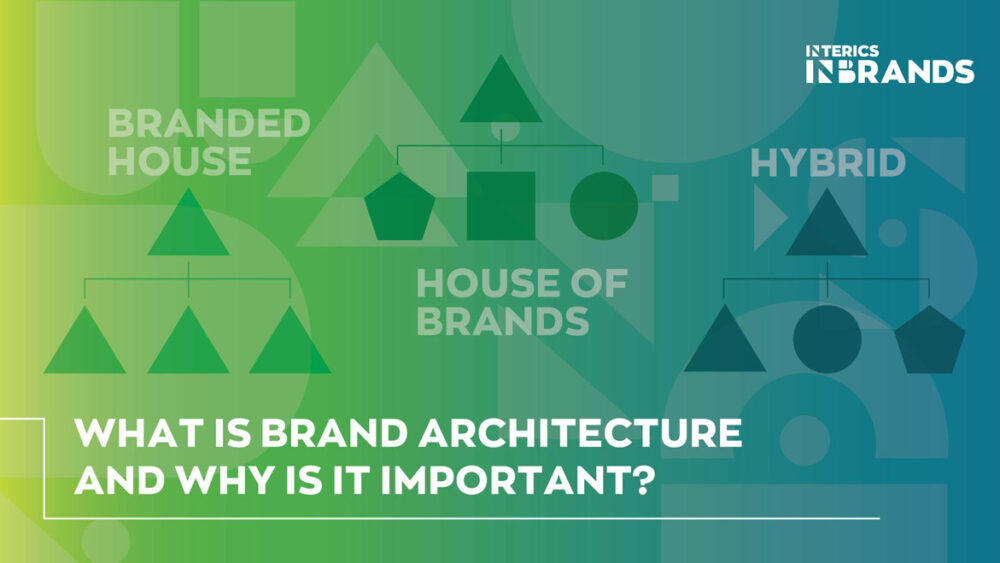When an organization is considering entering an untapped market, several challenges arise. How should the brand be presented? What role should each brand play? How to make things simple for consumers?
That’s exactly where Brand Architecture comes into play.
An effective brand architecture is the best method of bringing your business offerings into focus, allowing you to cross-promote them and control how your brand is perceived by consumers.
What is Brand Architecture?
Brand architecture is the organizational structure of a company’s range of brands, sub-brands and services.
Effective brand architecture consists of an integrated system of names, symbols, colours and visuals that directly affect the consumer’s thought process. This is because the key to brand architecture is the customer’s mental organization – how they see the business and how each offering satisfies their needs.
Brand architecture helps define both the breadth and depth of the brand. In addition to providing clarity regarding your brand and its offerings, it also influences customer behaviour by catalysing the transfer of brand equity between your brands and sub-brands. If a customer has a positive relationship with your master brand, they are more likely to try one of your sub-brands.
Why is Brand Architecture Important?
A well-planned brand architecture brings many benefits:
- Increased clarity: A brand architecture helps people understand your organization and brands as you would like them to. It offers clarity in product offerings for all participants including consumers and employees.
- Increase revenue: A well-implemented brand architecture allows brands to take advantage of each other with their offerings tailored to a gamut of audiences. Success with one brand could translate into opportunities for related brands to succeed as well.
- Increase brand equity: All brands that serve specific niches also eventually drive growth and promote the parent company. This increase in the organization’s value also results in increased brand equity.
- Improved company culture: Employees gain a better understanding of their brand and its place in the bigger picture and feel a sense of belonging.
- Reduced brand damage: Threats to the image of a brand need not have a direct negative impact on the brand image of the parent company. Depending on the type of brand architecture, the damage can be limited before it spreads across the whole organization.
The key to defining the relationships between brands is adopting a Brand Architecture Model.
Types of Brand Architecture
Brand Architecture models are the framework that organizes brands and their offerings under a single overarching brand. The highest level brands are commonly called corporate, umbrella, family, parent, or master brands.
The major types of brand architecture are:
- The Branded House
This is the most common type of brand architecture. Here, the organization is the master brand that owns several sub-brands that may feature elements of the master brand.
It is a comprehensive brand strategy that gives brands the room to grow and market themselves, though they do not operate independently and abide by the umbrella brand’s overall guidelines and strategy.
Eg: Apple, FedEx - House of Brands
In this model, an organization owns a set of distinct brands under a parent brand that people may or may not be aware of. The brands under this arrangement are managed and marketed by themselves, with respective brand names, logos, slogans and promotional strategies.
The parent brand is mainly needed for administrative or financial reasons.
Eg: P&G (Procter & Gamble), Yum Foods - Hybrid Brand Architecture
Also known as the ‘Blended House’, this brand architecture is somewhere in the middle of the two models above.
A Hybrid Brand Architecture combines elements of both the Branded House and House of Brands models to give each sub-brand the optimum benefit either through endorsement or independence. This model features a parent brand and related sub-brands all of which come with their own brand promises while still using elements from the umbrella brand in order to maximize synergy and benefit from the parent brand’s reputation. This model is often the result of mergers and acquisitions.
Eg: Marriott, Toyota.
How can Interics INBrands help?
A branding agency like Interics INBrands can add great value to a brand architecture project. They can play the role of an impartial observer who asks pertinent questions and makes strategic suggestions without being hassled by internal biases and politics. It must also be the case that your organization doesn’t carry out brand consolidation very often, but a branding agency typically does numerous such projects every year, giving them loads of relevant experience and expertise.
A brand launch agency can do the research to figure out which types of Brand Architecture best fit your needs and guide you down the right path. They can also help with brand positioning and maintain structural consistency across your brand portfolio.
About Interics INBrands
Interics INBrands is a part of Interics Designs – a branding agency in India with more than 34 years of experience as a design agency, brand launch agency and packaging design company in India. With an impressive portfolio of clients for brand positioning strategy, startup branding, corporate identity program in India, product launch strategy, creative packaging design, spatial branding and more, we offer the full range of branding services.
Conclusion
Building a well thought out brand architecture is not easy, which is where branding agencies come into the picture.
Brand Architecture is ultimately about understanding the nuances of your brand and, after diligent research, taking a decision on how to utilize each of its offerings to benefit the whole. A branding agency is sure to give you the optimum solution and brand launch strategy that allows you to do this.
In conclusion, the aim of brand architecture isn’t just to give clever names to your products and services; It is to create clarity from chaos with intelligent brand positioning to hone the edge of your continuous branding efforts.

